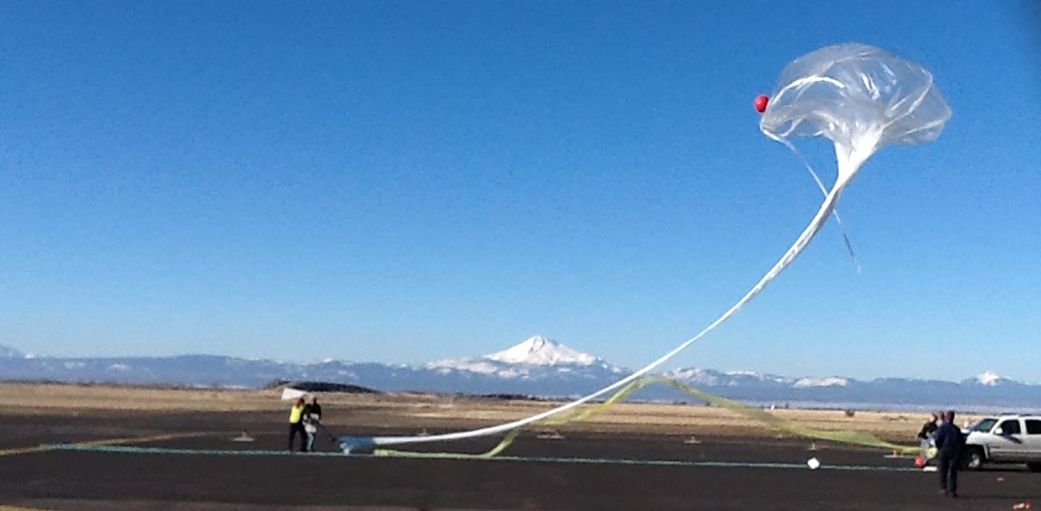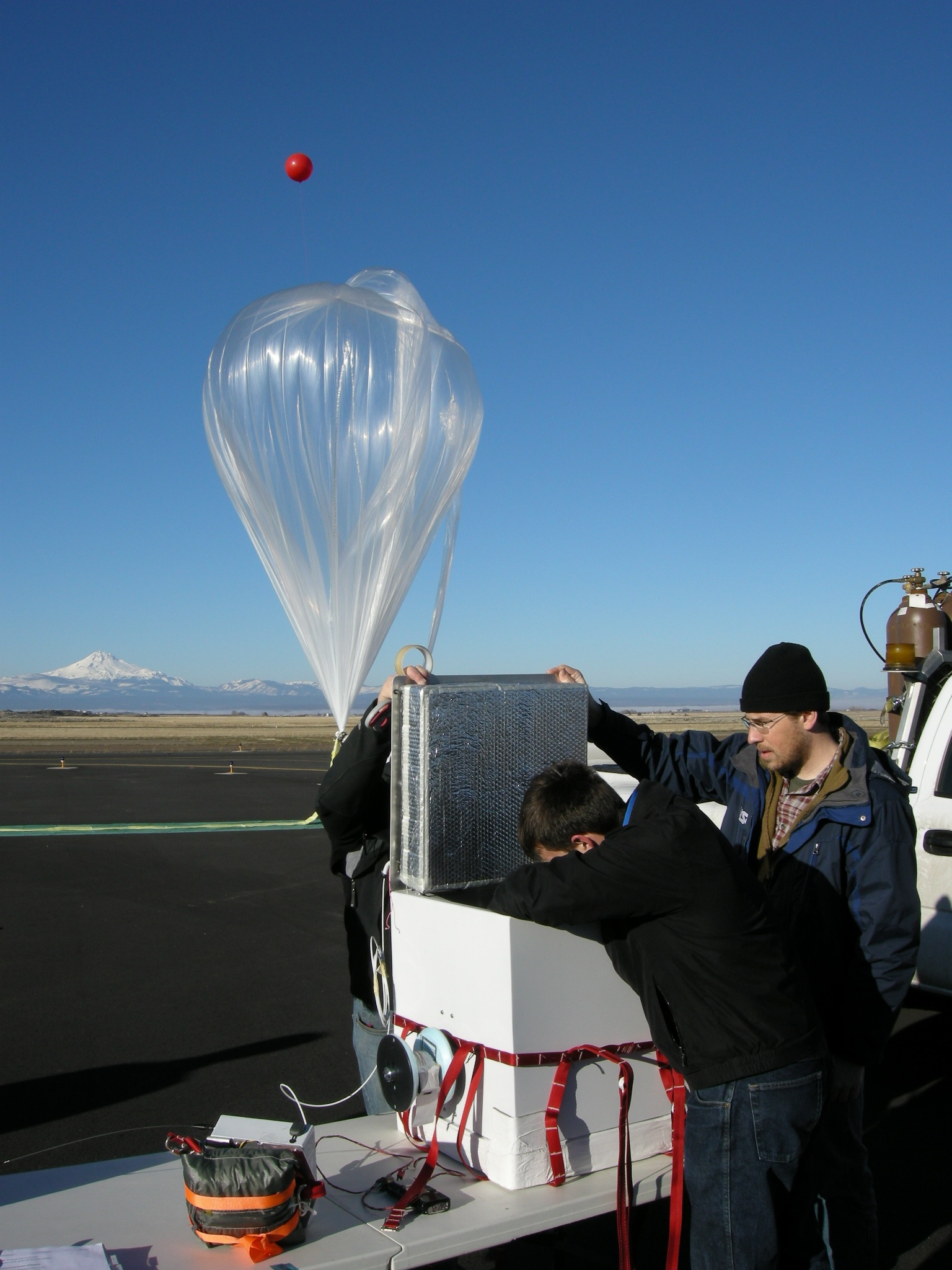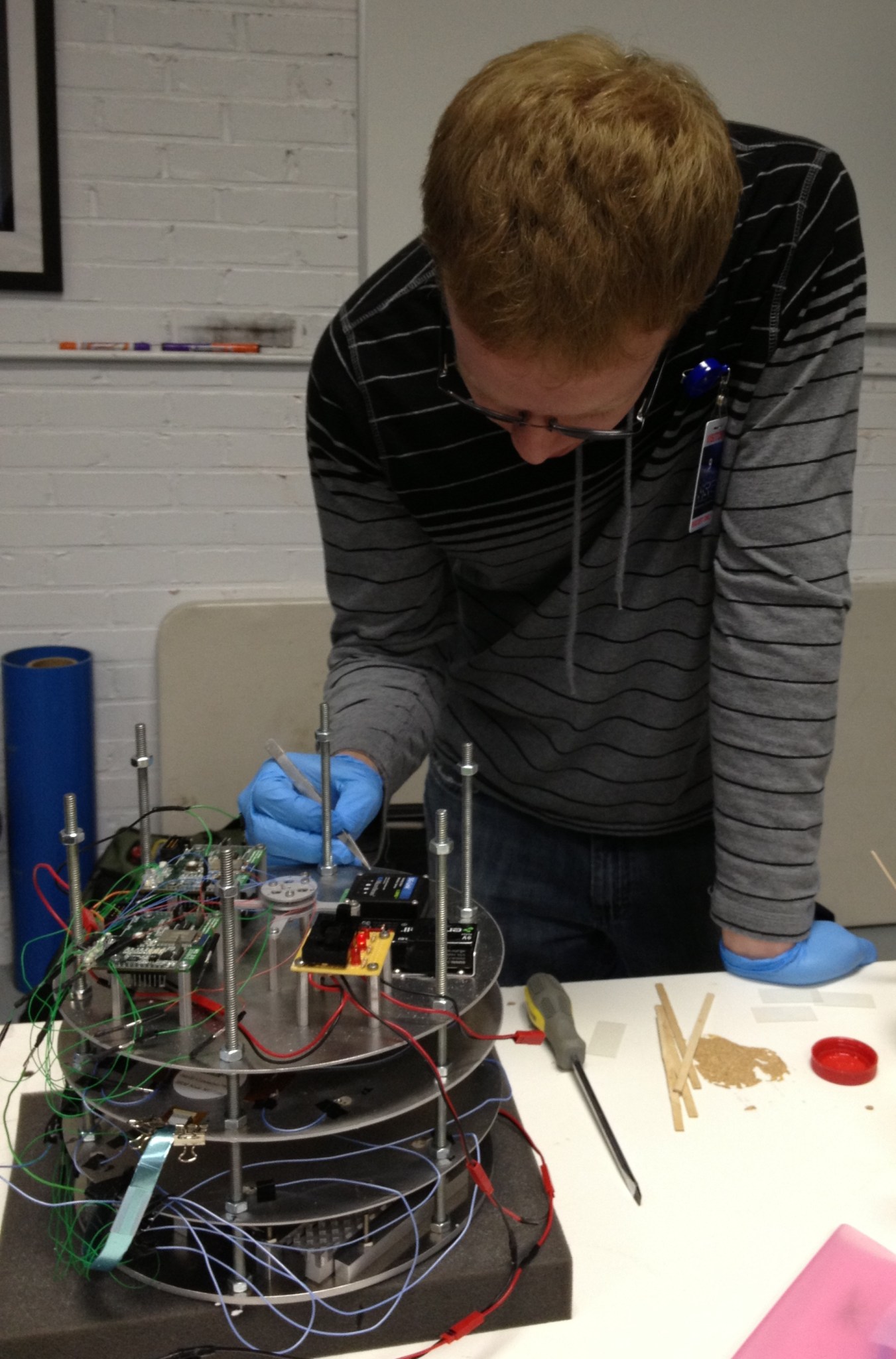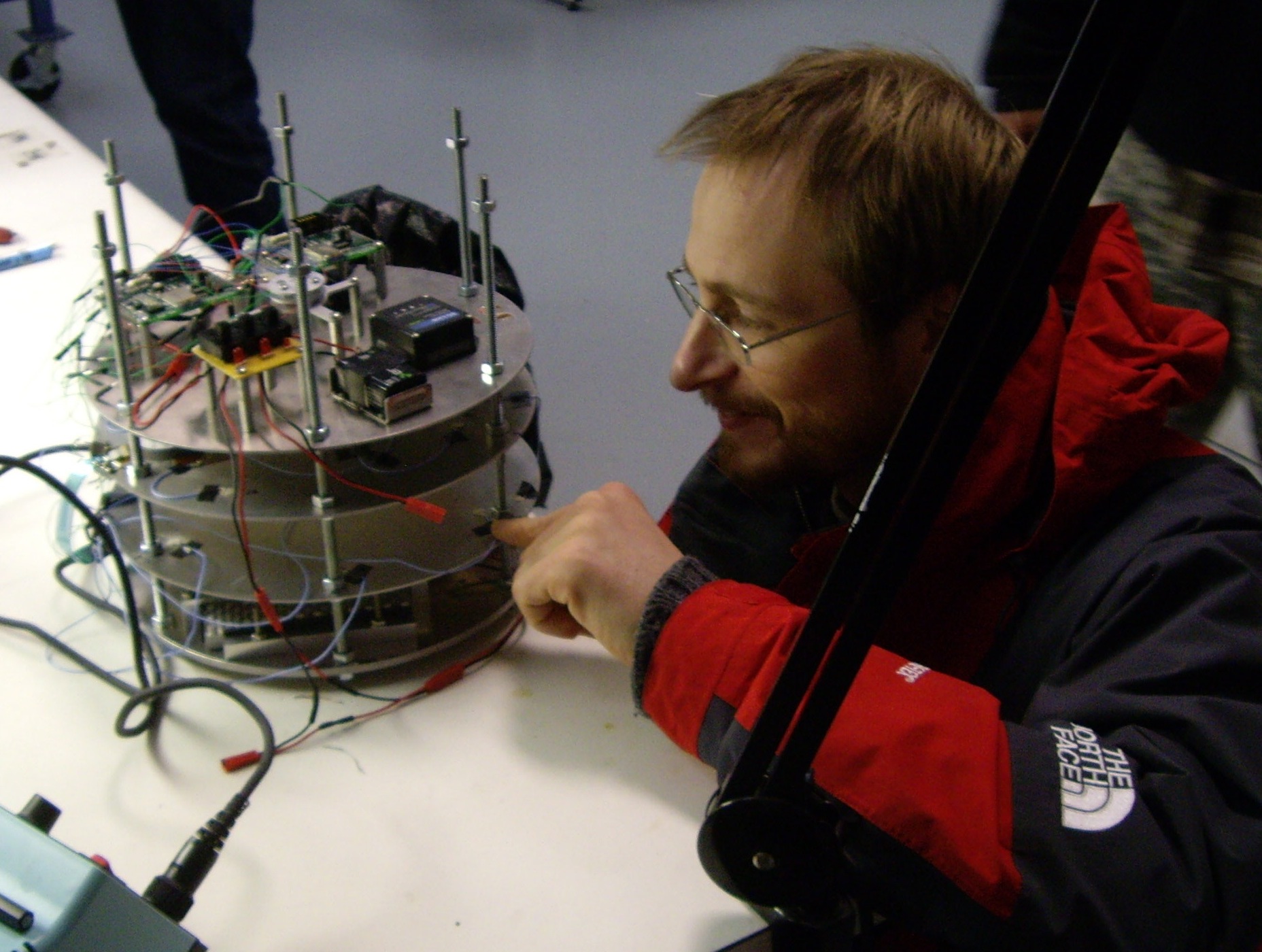NASA’s Flight Opportunities Program marked its first high-altitude balloon payload flight recently when one of the program’s flight providers, Near Space Corporation (NSC) of Tillamook, Ore., launched a developmental technology payload on a high-altitude balloon.
With Mount Jefferson in Oregon’s Cascade Range as a backdrop, NSC personnel sent the balloon aloft to an altitude of about 102,000 feet – just over 20 miles – after launch from the airport at Madras, Ore., Jan. 20. Suspended underneath the balloon was a data acquisition system payload developed by the New Mexico Institute of Mining and Technology (NMT) that would monitor the reliability of a commercial space vehicle’s structure.
“The NSC high altitude balloons provide a cost-effective platform to enable technology development payloads to be tested in a realistic, space-like operational environment,” said Bruce Webbon of NASA’s Ames Research Center, campaign manager for the launch. “Conducting such tests is fundamental to achieving the Flight Opportunities Program’s goals of advancing technology maturation.”
NMT professor Andrei Zagrai said a team of NMT engineering students designed and built the monitoring system to determine structural integrity for space vehicles, which is especially important for reusable craft re-entering the atmosphere. He said the technical university is focused not only on educating a new generation of engineers, but also on providing practical experience to their students.
The flight experiment successfully delivered data that validated both sensors and wireless communication electronics that can be detected through metallic spacecraft materials over considerable distances that had to be proven in a realistic space environment.
Near-space balloon platforms provide a capability for the NASA program by flying above 99.9 percent of the atmosphere for long durations of hours or days, compared to only a few minutes with suborbital vehicles.
“We are pleased with the immediate success we have been able to bring to NASA’s Flight Opportunities Program with our relatively mature low-cost platform,” said NSC President Tim Lachenmeier. “The program provides a unique win-win-win situation for NASA, technology developers and NSC.”
The Federal Aviation Administration’s Office of Commercial Space Transportation, the Air Force Research Laboratory’s Space Vehicles Directorate and NMT funded the students’ research and testing of the health monitoring system. The Los Alamos National Laboratory, Metis Design and LORD Microstrain provided the hardware components.
An FAA spokesman noted that NASA was very cooperative and responsive in planning and executing this flight.
NASA’s Space Technology Program is innovating, developing, testing and flying hardware for use in NASA’s future space missions. NASA’s Dryden Flight Research Center at Edwards, Calif., manages the Flight Opportunities Program for NASA’s Space Technology Program. NASA’s Ames Research Center at Moffett Field, Calif., manages the payload activities for the program.
For more information on the Flight Opportunities program, visit: https://www.nasa.gov/directorates/spacetech/flightopportunities/index.html






























